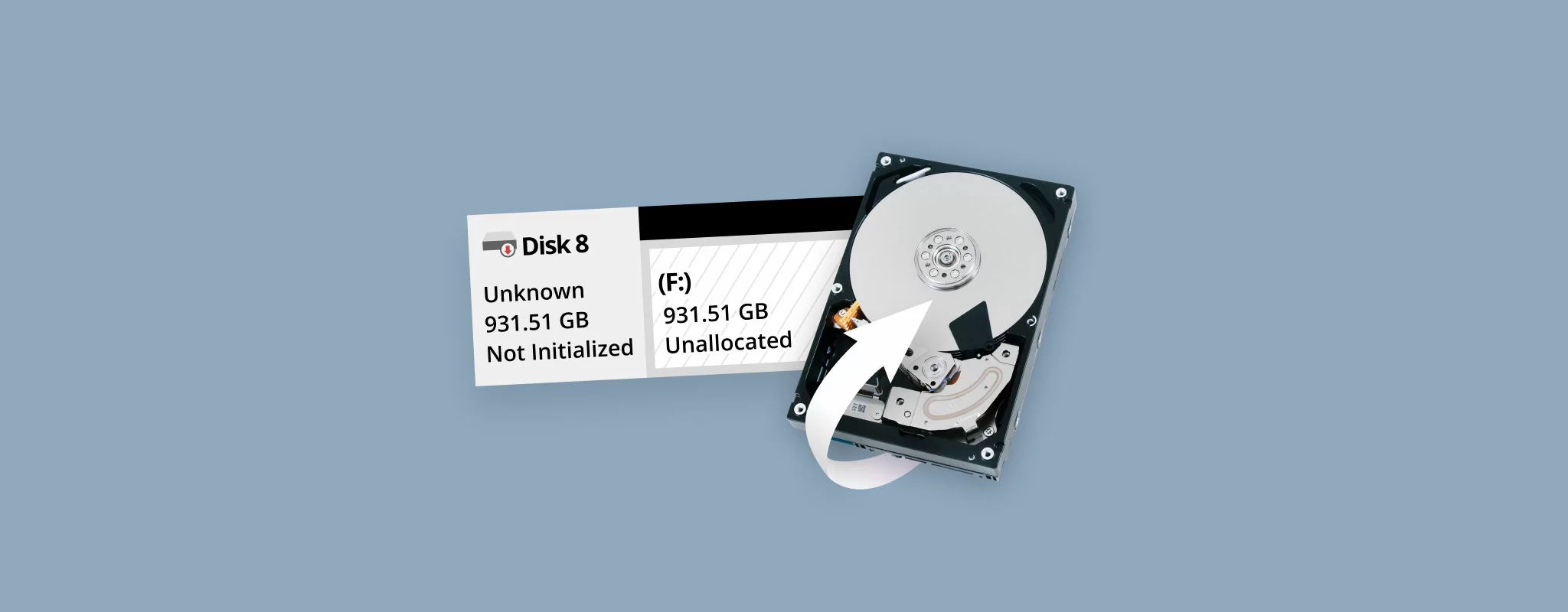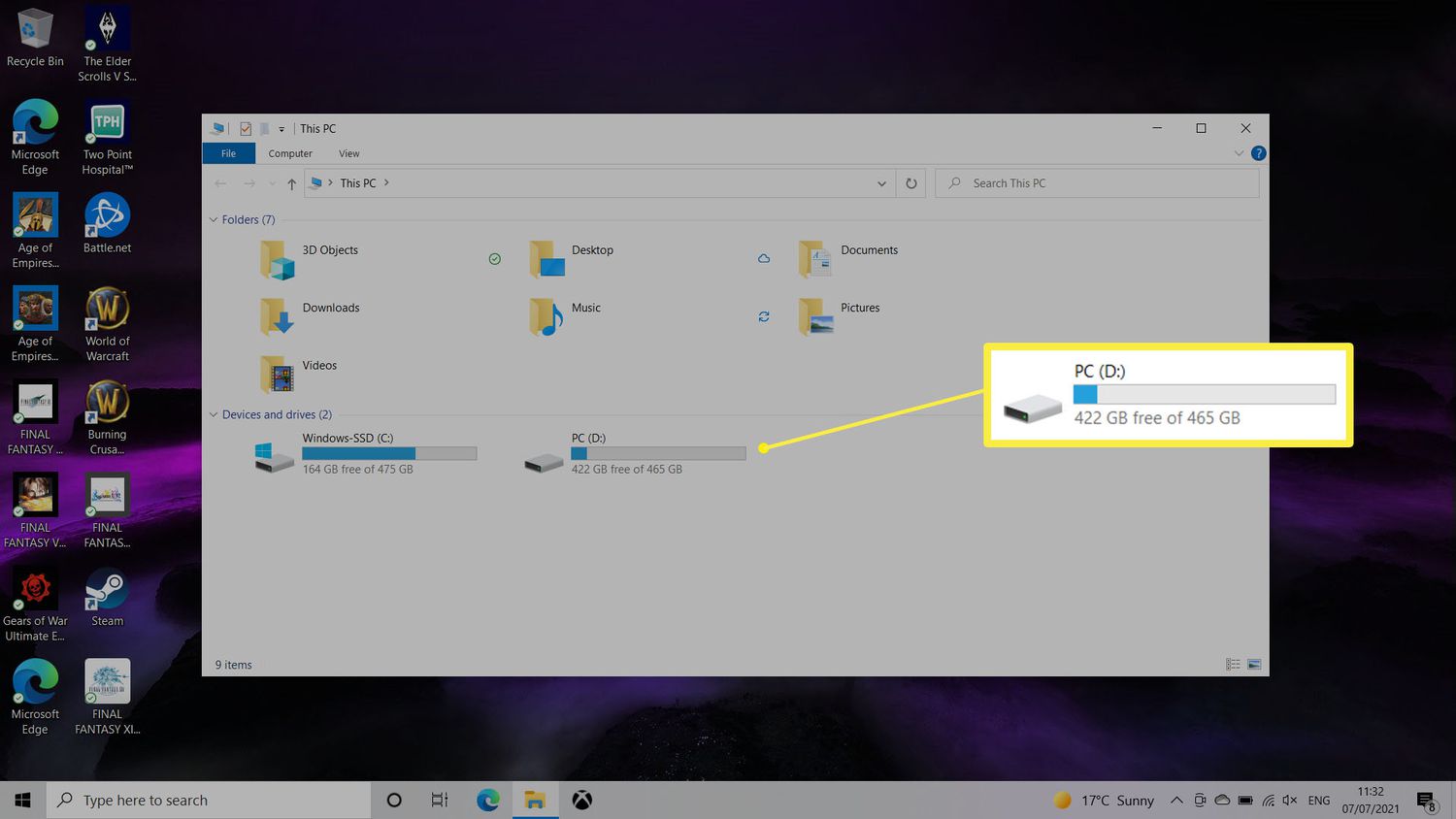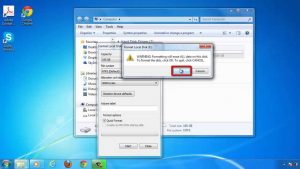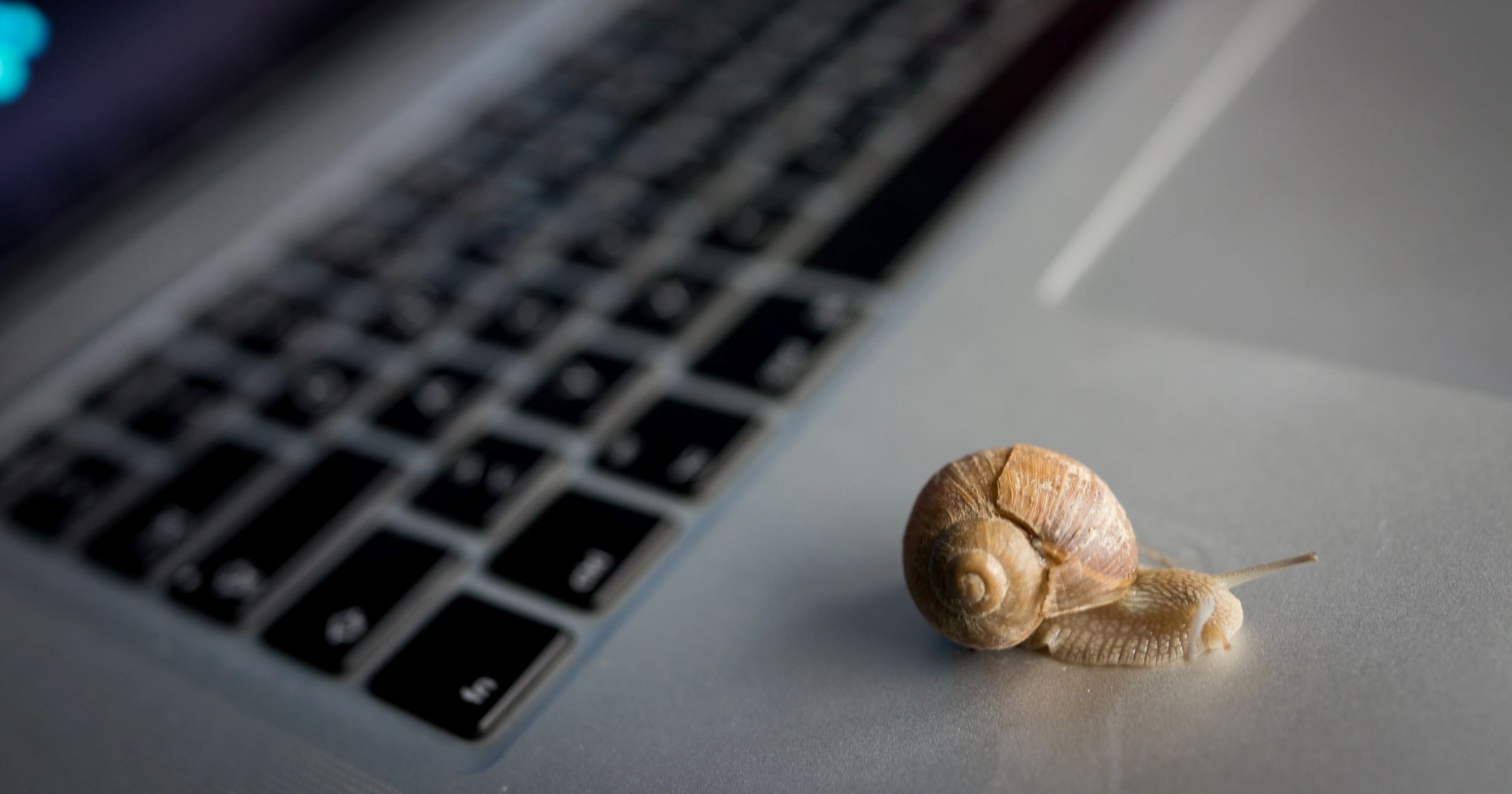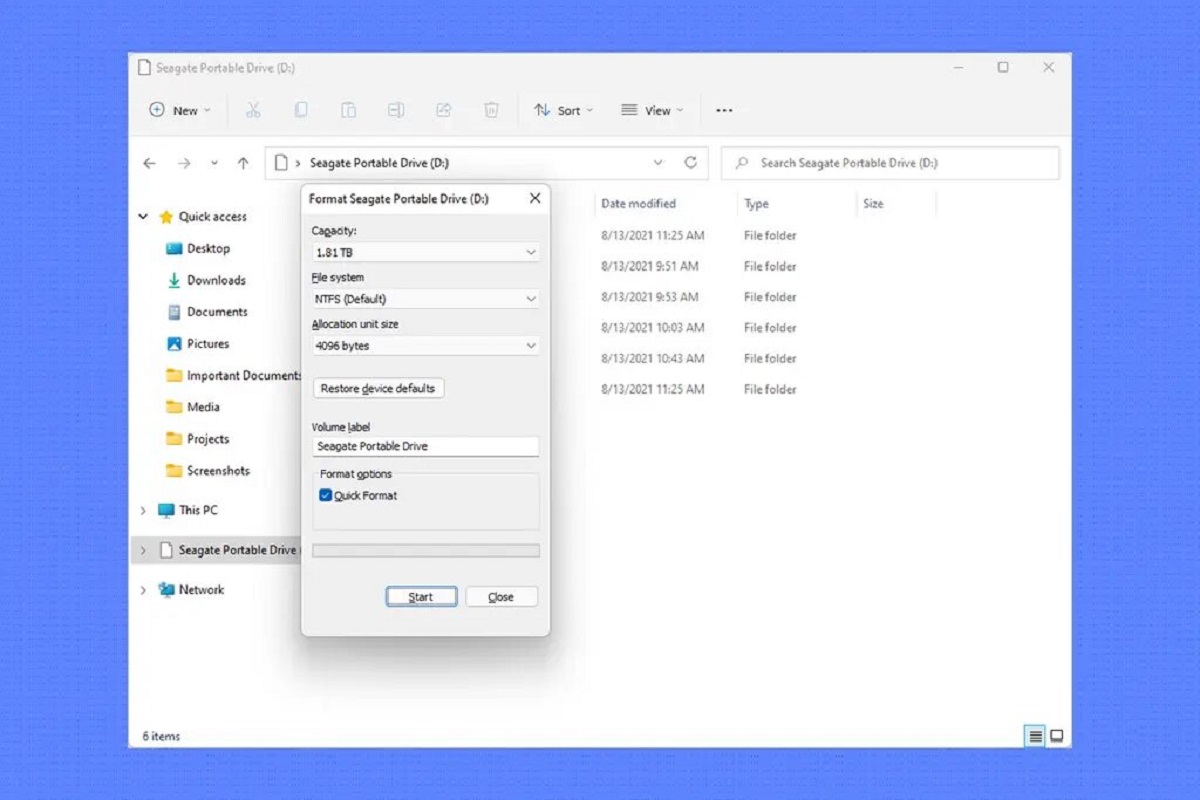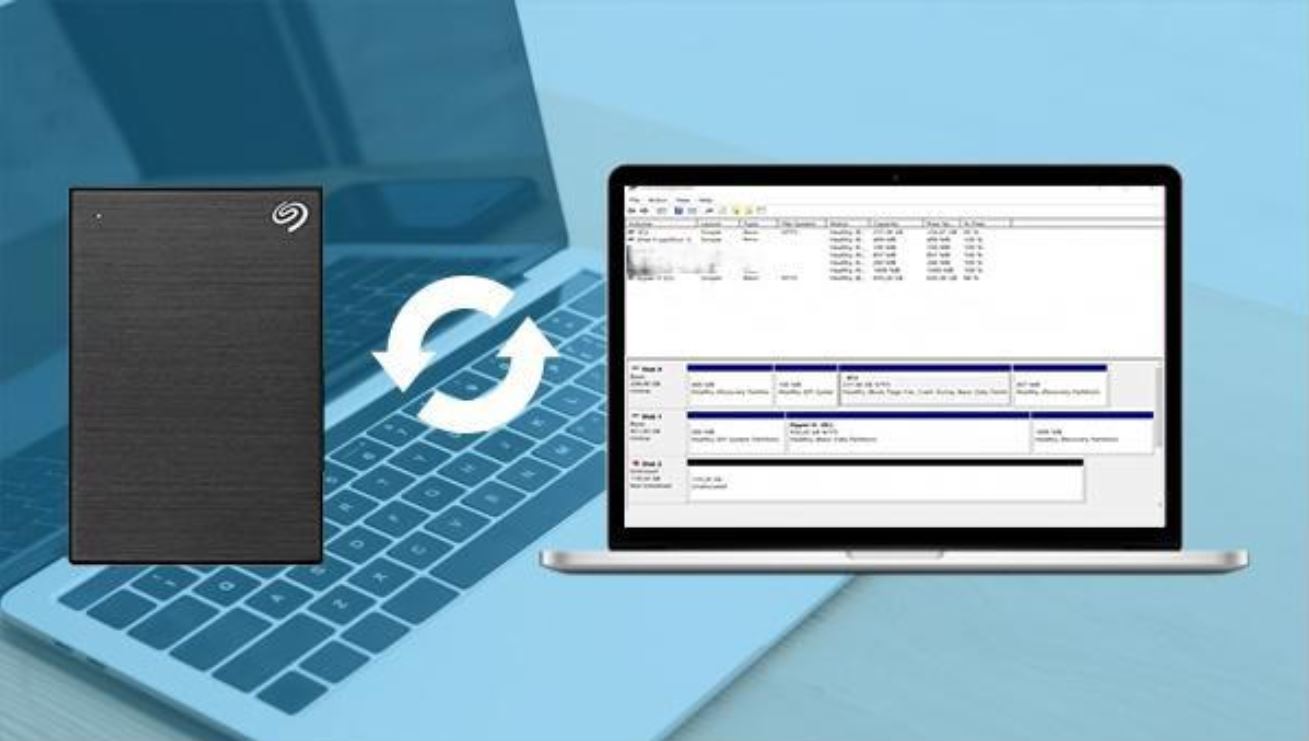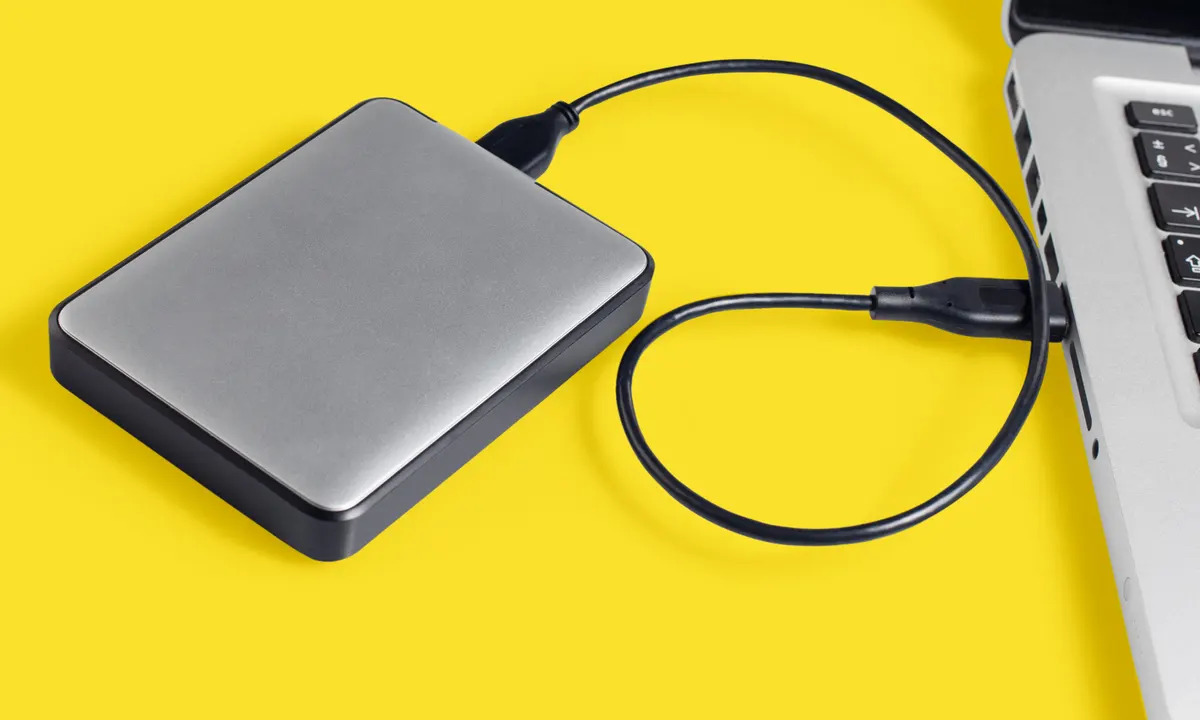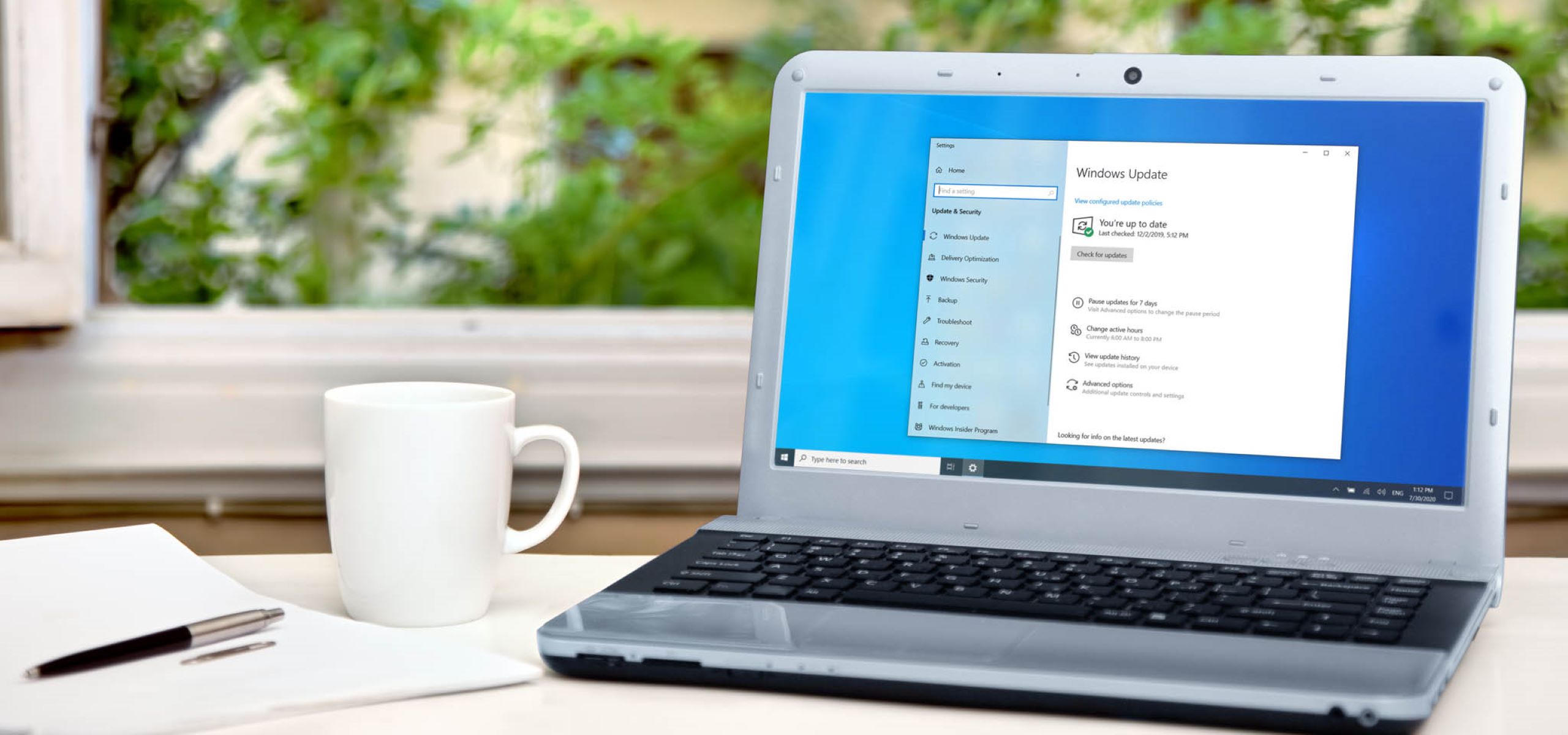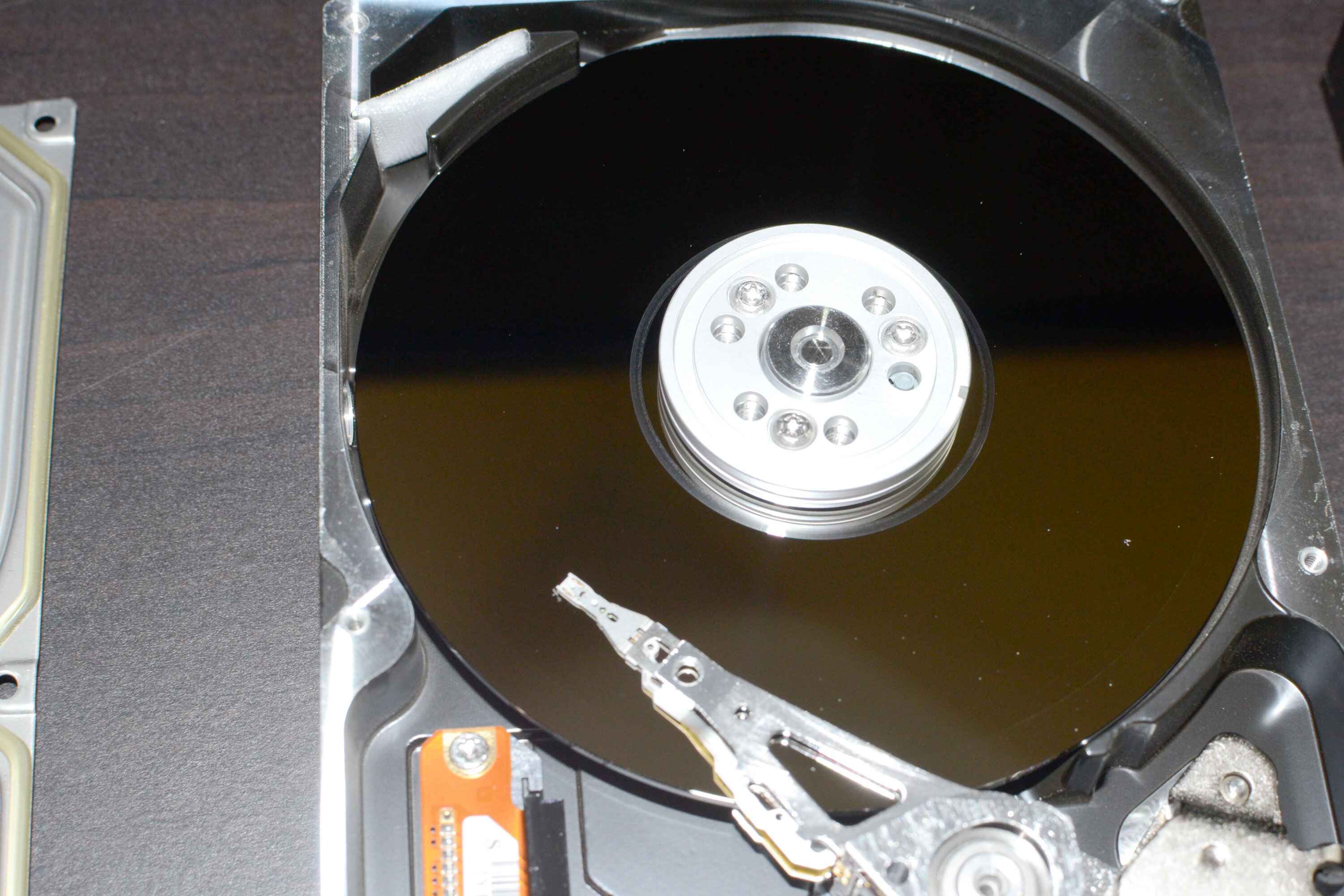Introduction
A hard disk drive (HDD) is an essential component of a computer system, serving as the primary storage device for data. It stores everything from the operating system and software applications to personal files and documents. However, encountering an unknown hard disk drive issue can be frustrating for Windows 10 users. This issue occurs when the operating system fails to recognize or identify the connected hard disk drive, leading to potential data loss and restricted access to stored information.
Identifying the cause of an unknown hard disk drive in Windows 10 is crucial in order to resolve the issue and regain access to the storage device. Understanding the potential reasons for this problem can help users take appropriate actions to restore functionality and prevent further data loss.
In this article, we will explore the possible reasons for an unknown hard disk drive in Windows 10 and discuss effective troubleshooting steps to resolve the issue. By the end of this article, you will have a better understanding of the underlying causes and be equipped with the necessary knowledge to address the problem.
What is an Unknown Hard Disk Drive?
An unknown hard disk drive refers to a situation where the Windows 10 operating system does not recognize or identify a connected hard disk drive. This means that the drive will not appear in the File Explorer or Disk Management utility, making it inaccessible for viewing or manipulating files and folders.
When a hard disk drive is labeled as unknown, it indicates a failure in the communication between the operating system and the drive. As a result, the drive becomes inaccessible, and users may encounter error messages such as “Unknown Device” or “Uninitialized Disk” when trying to access it.
This issue can occur with both internal and external hard disk drives. In the case of an external drive, the symptoms might include the drive not being detected by the computer or appearing as an unrecognized device.
It is important to note that an unknown hard disk drive is different from a missing hard disk drive. In the case of a missing drive, it may still be visible in the Disk Management utility, but with a “Not Initialized” or “Unknown” status. However, the drive may still require troubleshooting to restore functionality.
Understanding what an unknown hard disk drive is crucial for troubleshooting purposes. By identifying the cause of the issue, users can take appropriate steps to resolve the problem and regain access to the data stored on the drive.
Possible Reasons for an Unknown Hard Disk Drive in Windows 10
There are several potential reasons why a hard disk drive may appear as unknown in Windows 10. Understanding these reasons can help users identify the underlying cause and take appropriate steps to resolve the issue. Here are some common factors that can lead to an unknown hard disk drive:
- Missing or Outdated Device Driver: A missing or outdated device driver can prevent the operating system from recognizing the hard disk drive. Drivers act as a bridge between the hardware and software components, facilitating communication. If the driver is missing or outdated, the operating system may fail to detect the drive.
- Virus or Malware Infection: A virus or malware infection can cause system disruptions, including the inability to detect a hard disk drive. Malicious software can interfere with system processes, including those responsible for recognizing and interacting with storage devices.
- Hardware Connection Issues: Physical connectivity problems can also lead to an unknown hard disk drive. Loose cables, damaged connectors, or faulty USB ports can interrupt the connection between the drive and the computer, preventing proper detection.
- Corrupted File System or Partition: A corrupted file system or partition on the hard disk drive can cause it to appear as unknown. File system corruption can occur due to sudden power outages, improper system shutdowns, or disk errors. In such cases, the operating system may fail to interpret the drive’s file system and label it as unknown.
These are just a few of the possible reasons for an unknown hard disk drive in Windows 10. It is important to consider these factors while troubleshooting the issue, as they can provide valuable insights into the underlying problem. In the next sections, we will explore specific steps to address each of these potential causes and fix the unknown hard disk drive issue.
Missing or Outdated Device Driver
A missing or outdated device driver can be a common reason behind an unknown hard disk drive in Windows 10. Device drivers act as a bridge between the hardware components and the operating system, enabling communication and proper functioning of the devices. If the driver associated with the hard disk drive is missing or outdated, the operating system may fail to recognize the drive.
To resolve this issue, it is essential to update the device driver. Here are the steps to update the hard disk drive driver:
- Open Device Manager: Right-click on the Start button and select “Device Manager” from the context menu. Alternatively, you can press the Windows key + X and choose “Device Manager” from the list.
- Locate the Hard Disk Drive: In the Device Manager window, expand the “Disk drives” category to view the list of installed drives. Look for the hard disk drive that is labeled as “Unknown” or “Unrecognized.”
- Update the Driver: Right-click on the unknown hard disk drive and select “Update driver” from the context menu. Choose the option to search automatically for updated driver software. Windows will search for the latest driver and install it if available.
- Restart the System: Once the driver update is complete, restart the computer to apply the changes. After restarting, check if the hard disk drive is now recognized by the operating system.
If Windows fails to find an updated driver automatically, you may need to visit the manufacturer’s website and download the appropriate driver for the hard disk drive. Ensure that you select the correct driver version for your operating system and follow the installation instructions provided by the manufacturer.
Updating the device driver can often resolve the unknown hard disk drive issue in Windows 10. However, if the problem persists, it is advisable to proceed to the next troubleshooting step to identify and address any other underlying causes.
Virus or Malware Infection
A virus or malware infection can lead to an unknown hard disk drive issue in Windows 10. These malicious software programs can disrupt system processes and interfere with the proper functioning of storage devices, including hard disk drives.
To tackle this problem, it is necessary to run a thorough antivirus scan to detect and remove any potential viruses or malware. Here’s how you can do it:
- Install or Update Antivirus Software: Ensure that you have reliable and up-to-date antivirus software installed on your Windows 10 system. If you already have antivirus software installed, make sure it is updated to the latest version.
- Scan the System: Open the antivirus software and initiate a full system scan. This scan will examine all files and folders, including the hard disk drive, for any signs of viruses or malware.
- Quarantine or Remove Detected Threats: If the antivirus scan detects any malicious software, follow the instructions provided by the software to quarantine or remove the threats. Quarantine isolates infected files, while removal permanently deletes them from the system.
- Restart the Computer: After the antivirus scan and threat removal, restart your computer. This will ensure that any lingering effects of the virus or malware are eliminated and that the system operates smoothly.
Running an antivirus scan and removing any detected threats can help eliminate the possibility of a virus or malware causing the unknown hard disk drive issue. However, if the problem persists, it is necessary to explore other potential causes and troubleshooting steps.
Hardware Connection Issues
Hardware connection issues can also lead to an unknown hard disk drive problem in Windows 10. A loose cable, damaged connector, or faulty USB port can interrupt the connection between the hard disk drive and the computer, resulting in the operating system failing to detect the drive.
To troubleshoot and resolve hardware connection issues, follow these steps:
- Check Physical Connections: Ensure that the cables connecting the hard disk drive to your computer are securely plugged in. If using an external hard drive, disconnect and reconnect the USB cable to ensure a firm connection.
- Try Different USB Ports: If you are using an external hard drive, try connecting it to a different USB port on your computer. Sometimes, a specific USB port may have issues, and using a different port can establish a successful connection.
- Use a Different Cable or Adapter: If you suspect that the cable or adapter you are using is faulty, try using a different cable or adapter to connect the hard drive. This can help determine if the issue lies with the hardware components.
- Test with a Different Computer: If possible, connect the hard disk drive to a different computer to see if it is recognized. This can help determine if the issue is specific to your computer or if there is a problem with the hard drive itself.
- Consider Professional Assistance: If none of the above steps resolve the connection issue, it is advisable to seek professional assistance. A computer technician can diagnose and fix any underlying hardware problems that may be causing the unknown hard disk drive issue.
By checking the physical connections, trying different USB ports, and using alternate cables or adapters, you can ensure that the hardware connection is not causing the unknown status of the hard disk drive. If the issue persists, further troubleshooting steps need to be taken to identify and resolve the problem.
Corrupted File System or Partition
A corrupted file system or partition on the hard disk drive can result in the drive being labeled as unknown in Windows 10. File system corruption can occur due to various reasons, such as abrupt power outages, improper system shutdowns, or disk errors. When the file system or partition becomes corrupted, the operating system may fail to interpret and recognize the drive correctly.
To address this issue, it is necessary to repair the corrupted file system or partition. Here are the steps to do so:
- Open Command Prompt as Administrator: Right-click on the Start button and select “Command Prompt (Admin)” from the context menu. This will open the Command Prompt with administrative privileges.
- Run the CHKDSK Command: In the Command Prompt window, type the following command and press Enter:
chkdsk X: /f(replace “X” with the drive letter assigned to the unknown hard disk drive). The “/f” parameter instructs CHKDSK to fix any errors it encounters. - Wait for the Repair Process: Allow the CHKDSK command to run its course and repair the file system or partition on the hard disk drive. The duration of the process will depend on factors such as the size of the drive and the extent of corruption.
- Restart the Computer: Once the repair process is complete, restart your computer to apply the changes. After the restart, check if the hard disk drive is now recognized by the operating system.
If the CHKDSK command fails to repair the corrupted file system or partition, it may be necessary to employ more advanced data recovery techniques or seek professional assistance. Data recovery specialists can often recover data from a corrupted drive even if the file system or partition cannot be repaired.
Repairing the corrupted file system or partition can often resolve the unknown hard disk drive issue. However, in situations where data recovery is the primary concern or if the problem persists, it is essential to consult with professionals for further assistance.
Steps to Fix an Unknown Hard Disk Drive in Windows 10
Encountering an unknown hard disk drive issue in Windows 10 can be frustrating, but there are several steps you can take to fix the problem and regain access to your storage device. Here are the essential steps to address the unknown hard disk drive issue:
- Updating Device Drivers: Start by updating the device driver associated with the hard disk drive. In the Device Manager, locate the unknown drive, right-click on it, and select “Update driver” to initiate the driver update process. Restart the computer after the update to apply the changes.
- Running an Antivirus Scan: Perform a full system scan with reliable antivirus software to detect and remove any potential viruses or malware that may be interfering with the drive’s recognition. Follow the instructions provided by the antivirus software for quarantine or removal of detected threats.
- Checking Hardware Connections: Ensure that all physical connections between the hard disk drive and the computer are secure. This includes checking cables, connectors, and USB ports. Try using different cables or adapters if necessary to establish a stable connection.
- Repairing Corrupted File System or Partition: Use the Command Prompt to run the CHKDSK command with the appropriate drive letter to repair any file system or partition corruption on the hard disk drive. Allow the repair process to complete and then restart the computer to apply the changes.
By following these steps, you can effectively troubleshoot and fix the unknown hard disk drive issue in Windows 10. However, it is important to note that deeper hardware or data recovery issues may require the assistance of professionals. If the problem persists even after attempting these steps, it is advisable to seek professional help to resolve the issue.
Updating Device Drivers
A common cause of an unknown hard disk drive issue in Windows 10 is missing or outdated device drivers. Device drivers act as the intermediaries between the hardware components and the operating system, enabling proper communication and functionality. If the driver associated with the hard disk drive is missing or outdated, the operating system may fail to recognize the drive.
Updating the device driver can often resolve the unknown status of the hard disk drive. Here are the steps to update the device drivers:
- Open the Device Manager: Right-click on the Start button and select “Device Manager” from the context menu. Alternatively, press the Windows key + X and choose “Device Manager” from the list that appears.
- Locate the Unknown Hard Disk Drive: In the Device Manager window, expand the “Disk drives” category to view the list of installed drives. Look for the hard disk drive that is labeled as “Unknown” or “Unrecognized.”
- Update the Driver: Right-click on the unknown hard disk drive and select “Update driver” from the context menu that appears. Choose the option to search automatically for updated driver software. Windows will then search for the latest driver version and install it if available.
- Restart the Computer: Once the driver update is complete, restart the computer to apply the changes. After the restart, check if the hard disk drive is now recognized by the operating system.
If Windows fails to find an updated driver automatically, it may be necessary to download the driver from the manufacturer’s website. Ensure that you select the correct driver version compatible with your operating system. Follow the installation instructions provided by the manufacturer.
Updating the device drivers is a crucial step in resolving the unknown hard disk drive issue in Windows 10. By ensuring that the drivers are up to date, you can establish proper communication between the operating system and the drive, allowing the drive to be recognized and accessed.
Running Antivirus Scan
A virus or malware infection can often cause an unknown hard disk drive issue in Windows 10. These malicious software programs can disrupt system processes and interfere with the proper functioning of storage devices, including hard disk drives. Running an antivirus scan can help detect and remove any potential viruses or malware that may be affecting the drive’s recognition.
Follow these steps to run an antivirus scan:
- Install or Update Antivirus Software: Ensure that you have reliable and up-to-date antivirus software installed on your Windows 10 system. If you already have antivirus software, make sure it is updated to the latest version.
- Initiate a Full System Scan: Open the antivirus software and initiate a full system scan. This scan will examine all files, folders, and system components, including the hard disk drive, for any signs of viruses or malware.
- Quarantine or Remove Detected Threats: If the antivirus scan detects any malicious software, follow the instructions provided by the software to quarantine or remove the threats. Quarantine isolates infected files, while removal permanently deletes them from the system.
- Restart the Computer: After the antivirus scan and threat removal, restart your computer. This helps ensure that any lingering effects of the virus or malware are eliminated and that the system operates smoothly.
Running an antivirus scan and removing any detected threats can often eliminate the possibility of a virus or malware causing the unknown hard disk drive issue. It is important to keep your antivirus software updated and regularly scan your system to prevent and address any potential security threats.
If the unknown hard disk drive issue persists even after running the antivirus scan, it may be necessary to explore other potential causes and implement additional troubleshooting steps.
Checking Hardware Connections
Hardware connection issues can often be a culprit for an unknown hard disk drive problem in Windows 10. If the connection between the hard disk drive and the computer is loose or compromised, the operating system may fail to detect the drive, resulting in it being labeled as unknown. To resolve this issue, it is important to check and ensure the hardware connections are properly established.
Follow these steps to check the hardware connections:
- Check Physical Connections: Verify that all cables connecting the hard disk drive to your computer are securely plugged in. Ensure that the power and data cables are firmly inserted into their respective ports.
- Inspect the Cables and Connectors: Examine the cables and connectors for any signs of damage or wear. If you notice any frayed or damaged cables, it is recommended to replace them with new ones.
- Try Different USB Ports: If you are using an external hard drive that connects via USB, try connecting it to different USB ports on your computer. Sometimes, specific USB ports may have issues, and using an alternative port can establish a stable connection.
- Use Different Cables or Adapters: If you suspect that the cables or adapters you are using may be faulty, try using different ones to connect the hard drive. This can help determine if the issue lies with the hardware components.
- Test the Drive on Another Computer: If possible, connect the hard disk drive to another computer and check if it is recognized. Testing the drive on a different system will help determine if the issue is specific to your computer or if there is a problem with the hard drive itself.
- Consult with Professionals: If none of the above steps resolve the connection issue, it is recommended to seek professional assistance. A computer technician can diagnose and fix any underlying hardware problems that may be causing the unknown hard disk drive issue.
By ensuring that the hardware connections are secure and using alternate cables or ports if necessary, you can eliminate connection-related problems and improve the chances of the hard disk drive being recognized by the operating system.
Repairing Corrupted File System or Partition
A corrupted file system or partition on the hard disk drive can lead to the drive being labeled as unknown in Windows 10. File system corruption can occur due to factors such as sudden power outages, improper system shutdowns, or disk errors. When the file system or partition becomes corrupted, the operating system may fail to interpret and recognize the drive correctly. To address this issue, it is necessary to repair the corrupted file system or partition.
Follow these steps to repair a corrupted file system or partition:
- Open the Command Prompt as Administrator: Right-click on the Start button and select “Command Prompt (Admin)” from the context menu. This will launch the Command Prompt with administrative privileges.
- Run the CHKDSK Command: In the Command Prompt window, type the following command and press Enter:
chkdsk X: /f(Replace “X” with the drive letter assigned to the unknown hard disk drive). The “/f” parameter instructs CHKDSK to fix any errors it encounters. - Allow the Repair Process to Complete: Let the CHKDSK command analyze and repair the file system or partition on the hard disk drive. The duration of the process depends on factors such as the size of the drive and the extent of corruption.
- Restart the Computer: Once the repair process is complete, restart your computer to apply the changes. After the restart, check if the hard disk drive is now recognized by the operating system.
If the CHKDSK command fails to repair the corrupted file system or partition, it may be necessary to explore more advanced data recovery techniques or seek professional assistance. Data recovery specialists can often recover data from a corrupted drive, even if the file system or partition cannot be repaired.
Repairing the corrupted file system or partition can often resolve the unknown hard disk drive issue in Windows 10. However, in situations where data recovery is the primary concern or if the problem persists, it is essential to consult with professionals for further assistance.
Conclusion
Encountering an unknown hard disk drive issue in Windows 10 can be a frustrating experience. However, by understanding the possible reasons behind this problem and implementing the appropriate troubleshooting steps, you can regain access to your storage device and prevent further data loss.
In this article, we explored the potential causes of an unknown hard disk drive issue, including missing or outdated device drivers, virus or malware infections, hardware connection issues, and corrupted file systems or partitions. We discussed the necessary steps to resolve each of these causes, such as updating device drivers, running antivirus scans, checking hardware connections, and repairing corrupted file systems or partitions.
It is important to note that while these steps can often resolve the unknown hard disk drive issue, some situations may require professional assistance. In cases where data recovery is a concern or if the problem persists despite your best efforts, consulting with a computer technician or data recovery specialist is recommended.
By staying proactive with regular updates, performing antivirus scans, and ensuring secure hardware connections, you can minimize the likelihood of encountering an unknown hard disk drive problem in the future. Additionally, maintaining regular backups of your important data can provide an added layer of protection against potential data loss.
Now armed with the knowledge and troubleshooting steps outlined in this article, you can confidently tackle any unknown hard disk drive issue that you may encounter in Windows 10.







